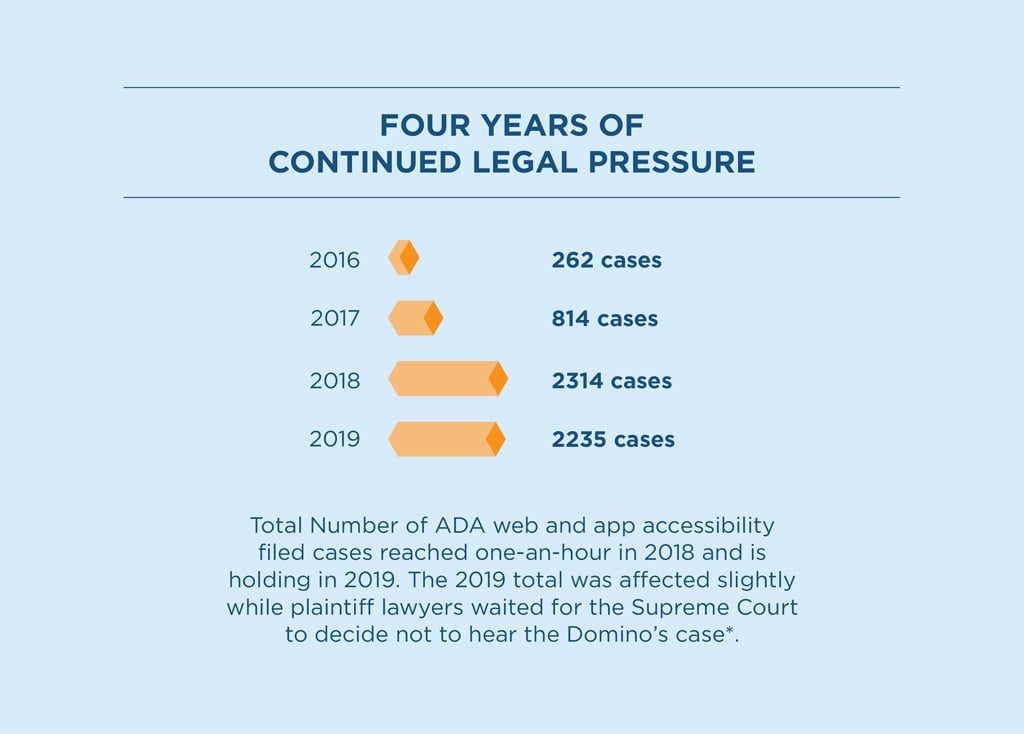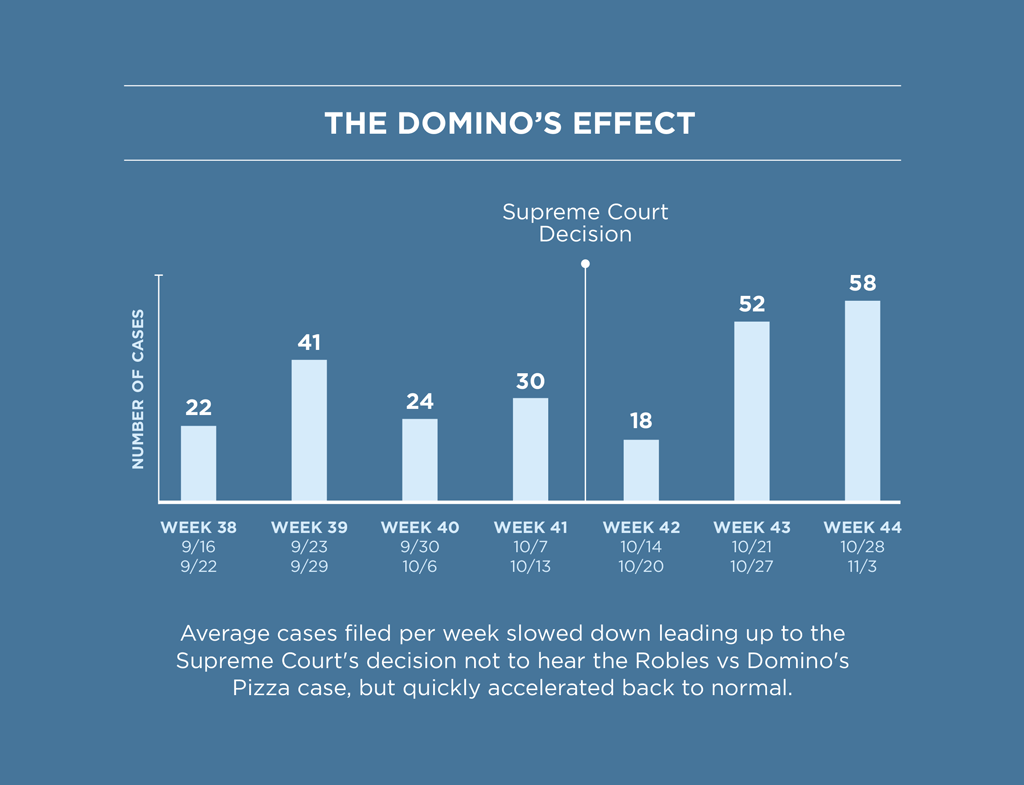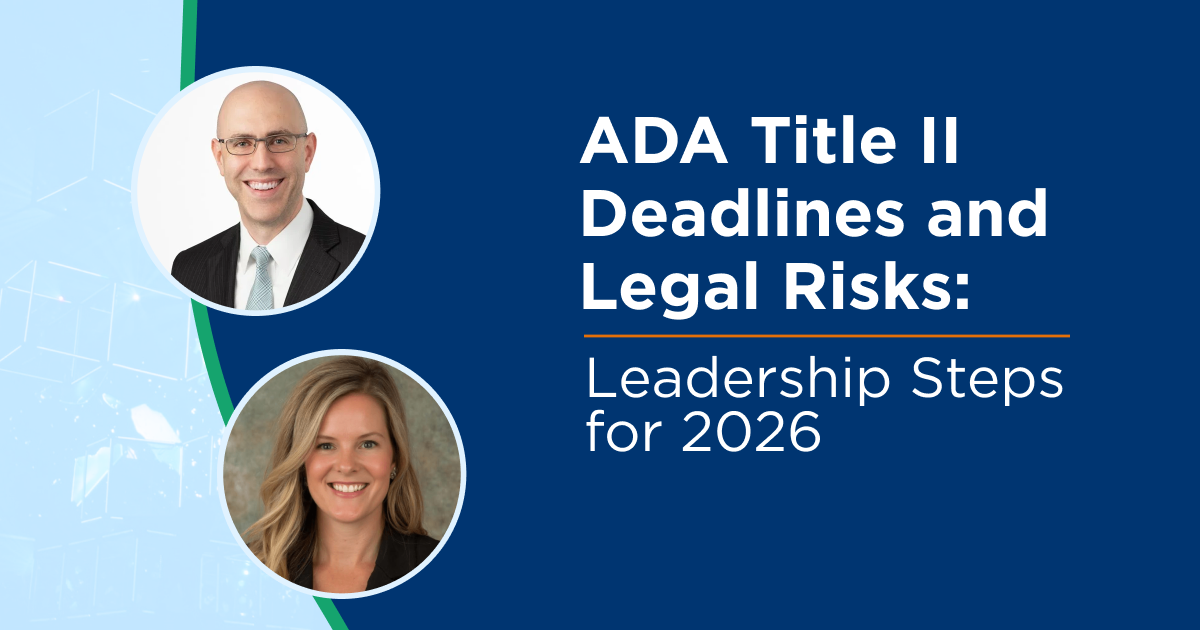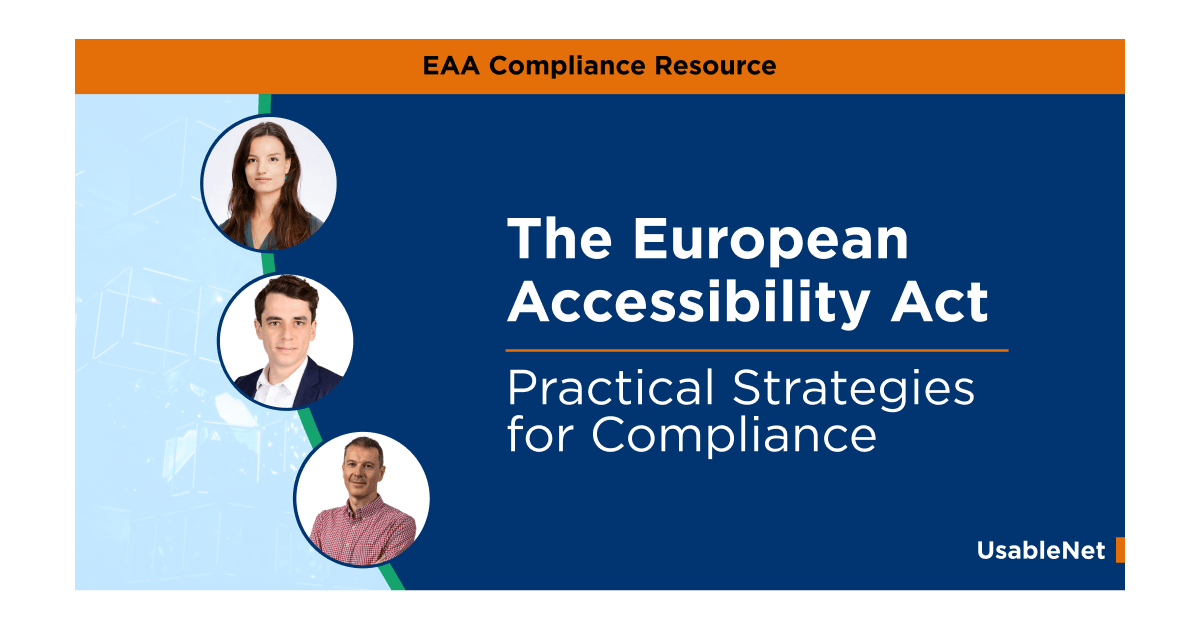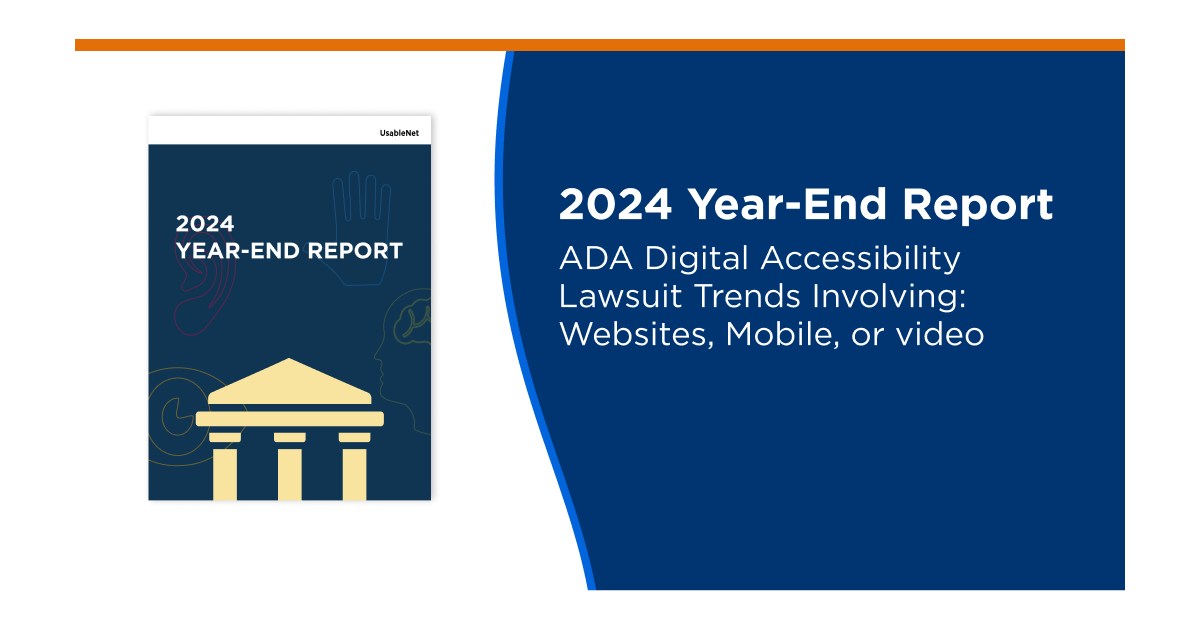Are your websites and mobile Apps fully accessible to everyone?
On UsableNet's February Webinar, Blank Rome Of Counsel Martin S. Krezalek joined UsableNet's Chief Innovation Strategist Jason C. Taylor for an exclusive Webinar, “The Rise of Mobile App Lawsuits and New ADA Litigation Trends for 2020.”
Here’s everything you need to know and a link to view the recording.
A Brief History of ADA Website and App Lawsuits
Since 2016, ADA digital lawsuits have skyrocketed from 262 cases in 2016 to 2,235 cases in 2019. As recently as 2017, the DOJ would get involved in ADA Website lawsuits. The DOJ’s past involvement is widely held to have established a precedent for digital accessibility litigation.
There are several industries that are targeted most often for litigation. These include the retail, restaurants, travel, and banking industries. Websites in these industries often have complex functionality and are easy to visit and assess for accessibility issues.
In these industries, there is also a history of ADA-related lawsuits for the physical world. This means that that some large companies in these industries may already have a process in place for settling ADA lawsuits that can be adapted for Website or App ADA lawsuits. According to federal data, large corporations seem to receive digital lawsuits more often than smaller businesses and seem to settle them quickly.
How the Domino’s Case Affected Lawsuits Moving Forward
In the 2019 case of Robles v. Domino’s Pizza, LLC (913 F.3d 898), the 9th Circuit Court of Appeals ruled that the Domino’s website and mobile app were subject to Title III of the ADA. The court ruled the ADA applies to the site and app because those features are major points of access to goods and services offered by Domino’s.
Rather than settle the case, Domino’s tried to fight it, even asking the U.S. Supreme Court to hear the case. When the Supreme Court declined, many news outlets declared it as victory for plaintiffs and disability rights activists.
Data on the number of ADA-based website lawsuits during that time frame suggests that other plaintiffs were encouraged to file their own ADA Web and App lawsuits. The rate of these cases per week increased within just a few weeks.
What Do Common Claims Consist Of?
ADA-based digital lawsuits from two sample weeks in early 2020 highlighted similar elements that seem to be typical. These included details like the following:
- Missing text alternatives for non-text content
- Wrong values announced when attempting to select a purchase
- VoiceOver-inaccessible locations suggestions and correct location information
- Full keyboard rather than a numeric-only keypad
- Wrong focus order
- Unlabeled products and wrong or unlabeled buttons
- Unable to order a product if the user wants to pick it up in the store
- VoiceOver users are not notified that a pop-up is displayed on the homepage
- Missing notice by VoiceOver when selecting a product color
- Missing notifications of ads and promos
- VoiceOver-inaccessible text on ad and promo images
The Process FOr ADA APP Lawsuits
These lawsuits will often follow a similar process. Generally that looks like this:
- A plaintiffs picks a focus area by industry, geography, etc.
- Compile list of participants in the category, plus a list of their mobile apps
- Run a software accessibility-checking tool on the app, then (maybe) follow up with a manual review
- Send a demand letter or draft complaint--or simply file a complaint
- Await responses
- Settle early
- Repeat
What should you know about mitigate your risk for and handling an ADA-based Web or App lawsuit?
- Assume your company will be sued
- Consider obtaining a consent decree, which may help deter subsequent lawsuits.
- Defenses are available and early dismissal is difficult, but not impossible.
- If the complaint survives a dismissal motion, you may incur significant legal expenses.
How to Avoid Lawsuits
To reduce risk of lawsuits on your mobile apps and websites, you need a accessibility plan that is ongoing. For those looking to get started right away, the Webinar speakers provided some actionable recommendations in the short, medium and long term.
For a free, 4-phase checklist on how to plan your Web Accessibility initiative, download UsableNet's digital accessibility checklist.
In the short term, you may be able reduce your legal risk if you:
- Pick a WCAG standard
- Inventory your sites and mobile apps
- Speak with an experienced legal professional about creating and publishing an accessibility statement
- Test for WCAG
- Perform user testing
- Hire an accessibility expert
In the medium term, consider remediation of sites and apps. This includes:
- Update UX and Design with accessibility principles
- Remediate JS, CSS and HTML code
- Produce and test new templates
- Integrate accessibility into release process and testing
Finally, for the long term, be prepared continue to maintain accessibility and document your efforts. A few tips:
- Design and market with accessibility in mind
- Train and enable Development teams and test
- Manual testing
- Automated testing
- Perform screen reader monitoring on releases
- Annual audits
- Add accessibility to user testing
Conclusion
If you’re unsure whether your company’s websites and apps are accessible, it’s critical that you learn how to make them ADA-compliant. UsableNet experts are here to help and can provide you with a free consultation for your Website. Contact us.
If you missed this Webinar, you can still register and listen to the full recording here: The Rise of Mobile App Lawsuits and New ADA Litigation Trends for 2020 presented by Martin Krezalek and Jason Taylor.

